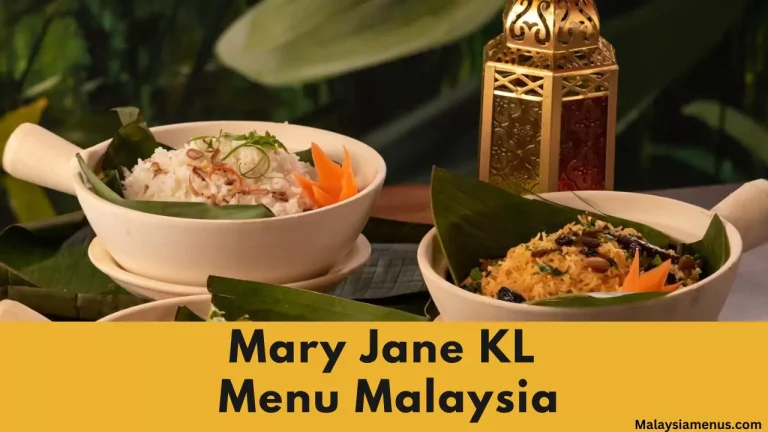The Art of Dining: Creating Memorable Restaurant Experiences

Every small detail, from atmosphere to sound track, all go into making the entire experience. The service, the pace of the service personnel, and even the aroma of freshly cooked food all go into making a lasting impression. Guests need to feel like they are being led into an environment that puts them in high regard and honors them.
To some, dining out is an experience—a departure from the routine, an indulgence, a break to relax, indulge, and be pampered. An evening out with buddies or a good night in two, the right ambiance provides the experience to the signature. Restaurants that are able to do it just right are because they are creating memories that they value each time they remember the dining room.
The Marketing Function in Restaurateur Success
Restaurant differentiation demands being creative and considerate in the competitive market. Promotion attracts them, and a well-researched marketing plan can break-or-make success or failure. Bite-sized electronic and print versions are used to take advantage of a restaurant’s best work. Considerately planned ad inserts are perhaps one of the most effective means of getting someone’s attention.
Restaurant owners and chefs can utilize a free flyer maker printable to design and personalize advertising materials for theme nights, daily promotions, or specials. Flyers can be designed to post in the restaurant, send out in the community, or put on the web to attract potential clients. Happy hour promotions, seasonal foods, or chef specials get people talking and generate new and repeat business.
To the extent of advertisement beyond flyers, there must be the proper employment of the suitable brand identity as well. The restaurant would sport a logo, color, and visual identity across each outlet of advertisement. The right website being well-ordered with great pictures of products, comments, and reservations online constitutes one beautiful way of making everything convenient for customers even before getting into the location.
Creating the Ideal Ambiance
A restaurant’s success also involves the eating experience it offers. The ambiance must be complementary to the food, whether the country rustic ambiance of an Italian trattoria or the formal sophistication of a fine dining restaurant. Well-chosen decor, lighting, and music all contribute toward creating the right ambiance.
Seating too contributes to comfort. Sufficient space does not make individuals cramped while eating. Candles placed on the tables, flowers, or odd objects of wall ornamentation introduce pieces that give the impression of having been customized, cozy, and welcoming.
A well-thought-out menu also has its role. It must speak of the restaurant’s personality, being new but not too new, in a bid to have the customer return again and again. A story menu—local dishes or creations by the chef—is an enhancement to the meal and elevates the meal to be more than a meal.
The Art of Cooking: Passion and Precision
Cooking itself is a daily craft that consists of love, taste, and method. The hearts of the chefs go into the dish so the guests can have a gastronomic experience in every bite. It’s good cooking because fresh food and good food are present, and being able to buy the freshest vegetables, meat, and seafood can make an ordinary dish.
Beneath the scene, the kitchen is an oily machine with cooks and personnel zipping about in perfect synchronicity to bring to the table creations that are almost as pleasing for the eye as they are to be eaten. Timing is the key—every element of a dish needs to be ready to exact specification before presentation. From the innovative topping on an appetizer to the last stroke of a dessert, perfectionism in every detail rules.
Experimentation in the kitchen is also important. Most chefs borrow ideas from other foods, and they combine and mash up to arrive at something new but palatable. A restaurant whose menu is constantly being rearranged with new, creative foods leaves one wanting more and curious.
Adopting Digital Strategies for Expansion
Healthy marketing presence cannot be limited to in-town ads. Diners must make online profiles so that they can be remembered in offices. Social networking sites are an excellent way of getting access to foodies, posting lip-smacking pictures, and promoting releases ahead. Good tips, ranging from kitchen dynamics to customers’ reviews, create loyal viewership.
Simple menu online, simple booking, and simple delivery solutions also result in a great customer experience. Other customers nowadays also use online reviews when they select where they are going to eat. Encouraging happy customers to post reviews on Google, Yelp, or TripAdvisor can help build trust and attract new customers.
Moreover, online reward programs ensure repeat visits. As birthday offers, reward points, or rewards, a structured program instills customer relationships and looks forward to long-term loyalty with the restaurant company.
Constructing Customer Loyalty
Customer satisfaction is at the forefront of all successful restaurants. Exceptional service, attention, and a huge love for hospitality make impressions. Word-of-mouth is always one of the strongest drivers of customer acquisition. A happy customer will come back and refer, establishing a strong community reputation.
Consistency is the biggest sign of being capable of keeping customers coming back. Customers must be able to rely on the same quality and service every time they dine out. If clients can rely on a restaurant to provide an extra-milenial experience, they will become repeat customers. Details, such as remembering a regular’s favorite or addressing them by name, make them feel that way.
Seasonal Menus and Seasonal Special Events
Special events and special menus of the season provide more opportunities for customer engagement. Seasonal small plates to celebrate the best of the season flavor make menu items new and intriguing. Tasting meals, wine pairings, or theme nights encourage diners to try new flavors and return for special events.
Adequately designed promotional material gets such events into the desired target market, and preparation of adequate promotional material is made easy by the free flyer maker printable. These promotions are to be placed on websites, social media and email newsletter alike, to reach out as wide an audience as possible.
Moreover, restaurants can promote the dining experience by engaging in business partnerships with local businesses, such as wineries, farmer’s markets, or breweries. Working with these kinds of establishments on specialty menus or co-produced events positions restaurants in front of additional consumers and brings more support from the community.
Conclusion
A restaurant’s success relies on foundations of quality, passion, and intelligent marketing. The formula for long term success is a great blend of culinary quality, warm hospitality, and intelligent marketing. Kitchen creativity and promotion keep the restaurants up-to-date and drawing a line of contented travelers.
By continuous innovation in their career, being customer-aware, and providing the best dining experience, restaurants can establish a lasting niche in the minds of their patrons. The right blend of tradition and innovation, taste and service, passion and business sense is what results in a restaurant as a place for fine dining.






